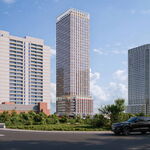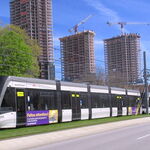scarberiankhatru
Senior Member
I doubt there would be many cost savings to having an underground LRT over a subway line when you need to run massive trains which need massive 300-400 foot stations (stations being the biggest cost of any underground line).
There aren't many cost savings, which is why if a route is to be built underground, there's automatically incentive to built it as a subway line and get more out of the investment.




